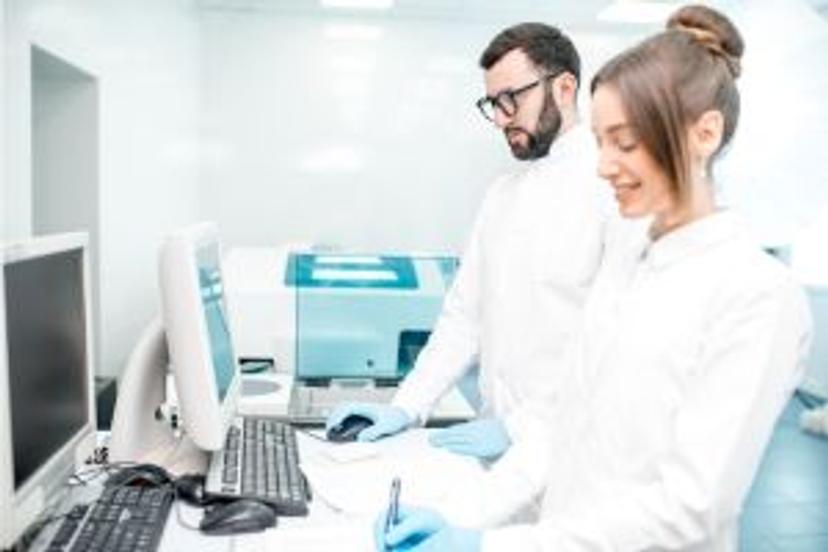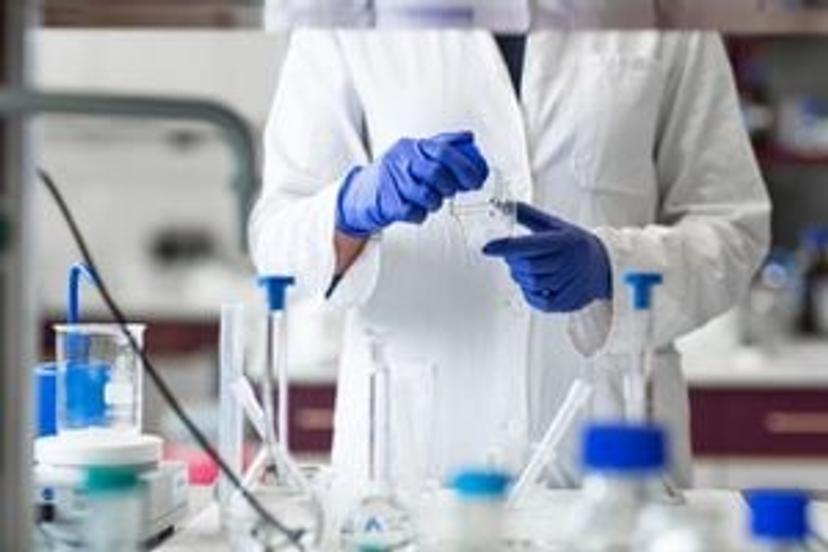6 upcoming webinars to boost your research
Discover the latest tools and techniques to expand your research capacity with expert-led presentations on bispecific antibody production, Droplet Digital PCR, sepsis identification, and more
23 Apr 2023
SelectScience® hosts dozens of informative free webinars for scientists every month, featuring world-class speakers at the very forefront of their respective fields. In this regular feature, we highlight the events you won't want to miss over the next few weeks or so, as well as some of our top on-demand webinars.
This week, explore innovative strategies to accelerate bispecific antibody production, discover how to maximize Droplet Digital PCR data quality, and consider the applications of ICP-MS for food and environmental analysis. Plus, discover a liquid handling platform which provides complete automation of the liquid handling steps in complex workflows, consider the role of lactate in early sepsis identification, and learn why EBSD has become a routine technique for materials characterisation.
Quest for success: Innovative strategies to accelerate bispecific antibody production

Bispecific antibodies (bsAb) have been heralded as the fourth wave of biopharmaceutical innovation. They are designed and manufactured to target multiple antigens with a single therapeutic. Bioprocessing workflows for bsAb production include critical steps such as antibody screening, characterization, multi-specific drug targetability testing and cell line development. Cell line processing has been enhanced by the use of automated technologies and high-throughput analysis of single-cell cloning, cell expansion, and cell growth analysis. Despite these advancements, challenges remain with bioanalytical assay productivity to evaluate biotherapeutic quality. In this webinar, Dr. Christina Tsai, Head of cell line development at IGM Biosciences will discuss strategies to drive workflow efficiencies and characterize superior antibody drugs.
Monday, April 24, at 16:00 BST / 17:00 CEST / 11:00 EDT / 08:00 PDT
Maximizing Droplet Digital PCR data quality for biopharmaceutical excellence

Many people have heard about the power of digital PCR (dPCR), but some may not be accessing the massive potential of this technology. Some dPCR instruments produce data that is error prone and difficult to read, hindering rather than enhancing crucial experiments for cell and gene therapy development and manufacturing. In this webinar, Frank Bizouarn, market development manager from the Digital Biology Group at Bio-Rad, will describe the characteristics of ideal dPCR data, potential causes and consequences of poor data, and strategies for maintaining diligence and avoiding pitfalls.
Tuesday, April 25, at 16:00 BST / 17:00 CEST / 11:00 EDT / 08:00 PDT
Advances and applications of ICP-MS for food and environmental analysis

In this webinar, Professor Brian Jackson, research professor in earth sciences and Director of the Trace Element Analysis (TEA) Core, will discuss developments in inductively coupled plasma mass spectrometry (ICP-MS) as a result of using helium collision mode. In addition, he will explore the utilization of reaction cell technologies such as those employed in modern triple quadrupole instruments. This webinar will also cover examples of extending the utility of ICP-MS through the use of enriched stable isotopes, and the coupling of GC, LC and laser ablation with ICP-MS. In addition, applications for the speciation and spatial analysis of arsenic, cadmium, and mercury in food and environmental systems will be given.
Tuesday, April 25, at 16:00 BST / 17:00 CEST / 11:00 EDT / 08:00 PDT
Fast and reliable automation of the NEBNext Ultra II FS DNA library prep kit for Illumina with firefly

Library preparation workflows are labor-intensive and difficult to scale while maintaining quality. As such, they are ideal candidate workflows for automation. The firefly® liquid handling platform provides complete automation of the liquid handling steps in complex workflows such as library preparation. It does so by combining pipetting, dispensing, shaking, and incubation within a compact benchtop system. A unique non-contact dispensing technology helps to reduce plastic waste, while low-volume accuracy enables the miniaturization of common workflows to drive down reagent costs. In this webinar, we will give an overview of this next-generation liquid handler.
Wednesday, April 26, at 15:00 BST / 16:00 CEST / 10:00 EDT / 07:00 PDT
The role of lactate in early sepsis identification: Experiences from intensive care

Lactate measurements are essential in the assessment of critically ill patients. This webinar will review the importance of lactate measurement and the clinical implications of an increased blood lactate level in the context of sepsis. Specific hospital sepsis protocols are outlined in detail with the therapeutic measures associated with each stage of sepsis. The role of lactate in the risk assessment of patient morbidity and mortality will be presented. Plus, the advantages of obtaining a point of care lactate result versus traditional laboratory analysis will be reviewed.
Wednesday, April 26, at 17:00 CEST / 16:00 BST / 11:00 EDT / 08:00 PDT
From niche to mainstream: Why EBSD has become a routine technique for materials characterisation

Electron backscatter diffraction (EBSD) in scanning electron microscopes is a surface analysis technique that has been commercially available for over three decades. However, only in recent years has it become a well-established tool for routine materials characterization. In this webinar, we will look at the recent developments, from faster detectors to more automated software, that have enabled the transition of EBSD into a mainstream analytical method. We will assess the latest advances in EBSD technology and show how these are opening up new application fields, from biomaterials to batteries.
Session 1: Thursday, April 27, at 09:00 BST / 10:00 CEST / 04:00 EDT / 01:00 PDT
Session 2: Thursday, April 27, at 16:00 BST / 17:00 CEST / 11:00 EDT / 08:00 PDT
Watch our webinars at a time that suits you
Missed one of our webinars? Fortunately, all SelectScience webinars are made available on demand after the live event. Catch up on some of our latest webinars below:
Solving the integration puzzle: Only an open ecosystem holds the key to unlock the potential of lab data
How leaders can drive more efficient, cost-effective, and value-based healthcare
Pushing the limits: Optical spectroscopy at the extremes
Next generation solutions for proteomics sample preparation
How NASA scientists brought real time microbial profiling to the International Space Station
Overcoming Dissolution Challenges with Low-Dose Pharmaceuticals and Medical Devices
Optimizing equipment for optical spectroscopy
A deep dive into OriginPro for the analysis of high-resolution DGE-AUC data
SelectScience runs 10+ webinars a month across various scientific topics, discover more of our upcoming webinars>>
